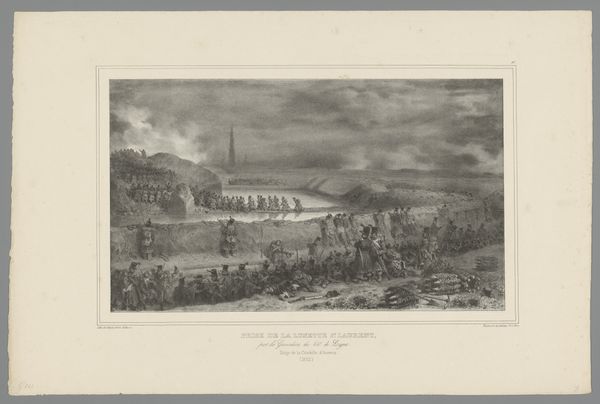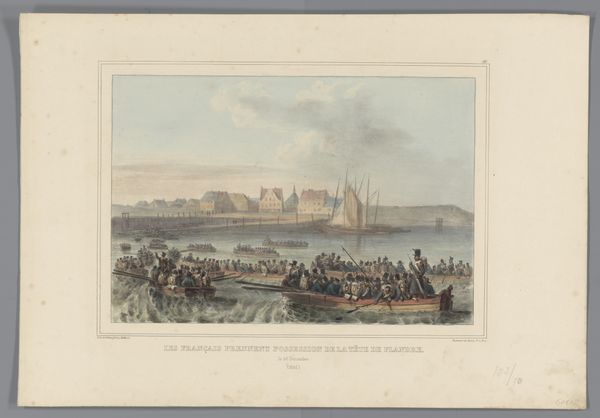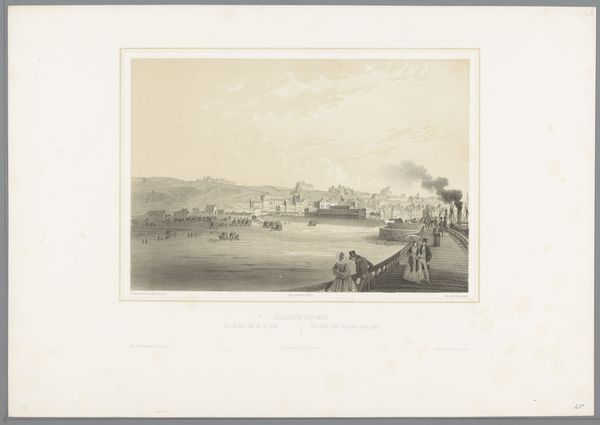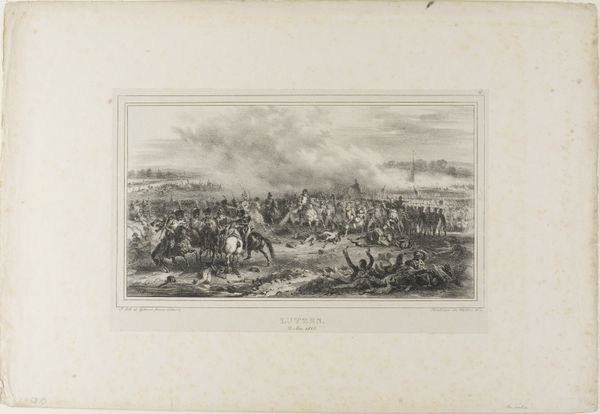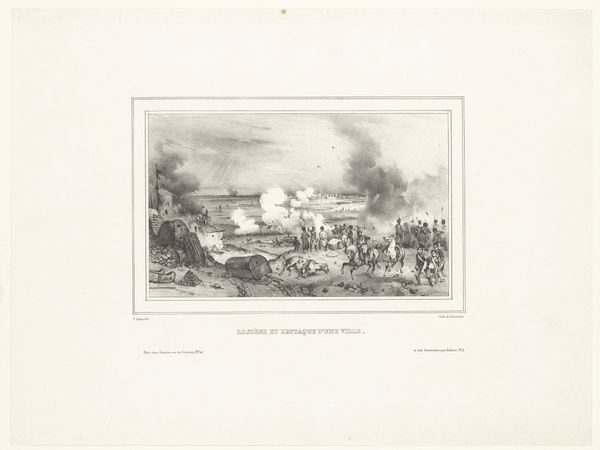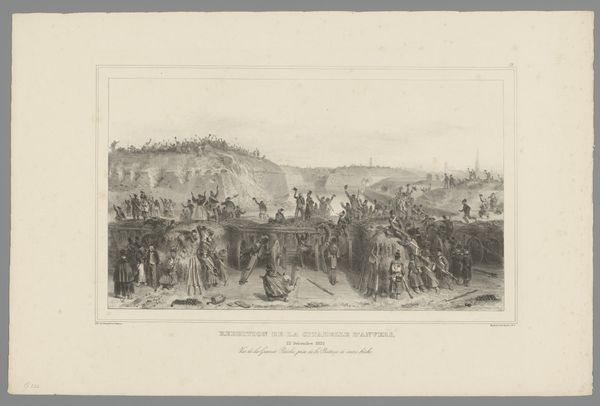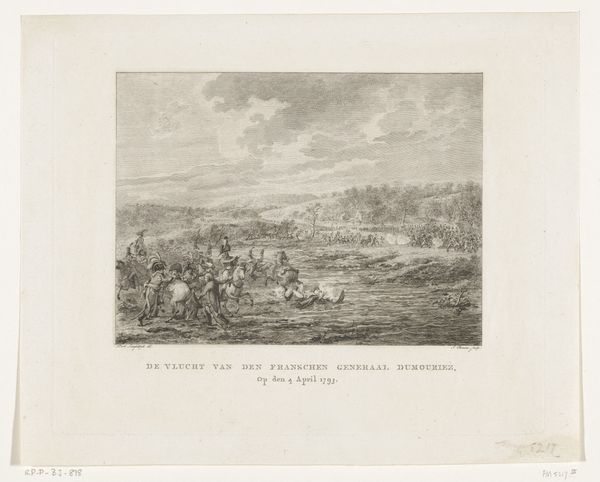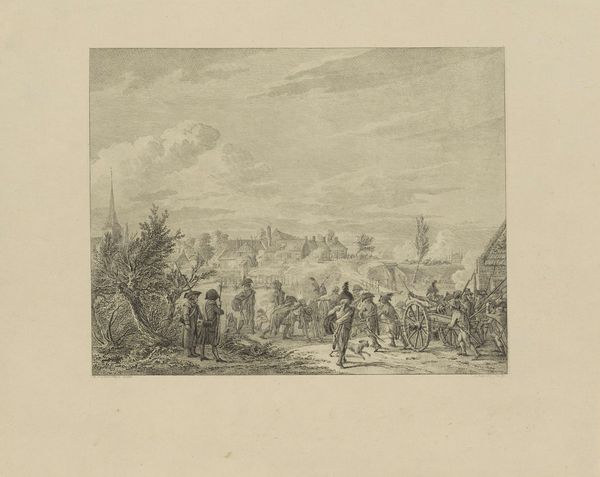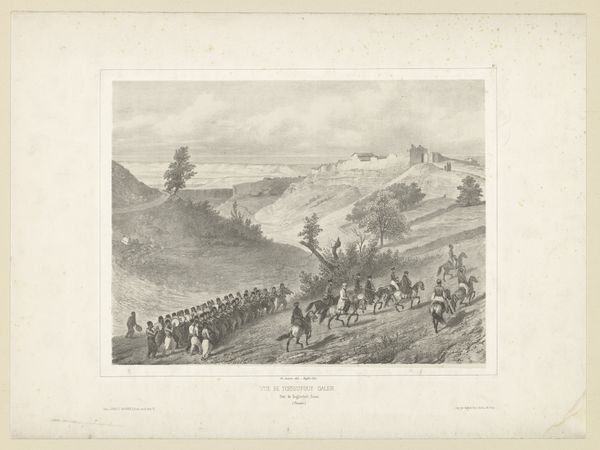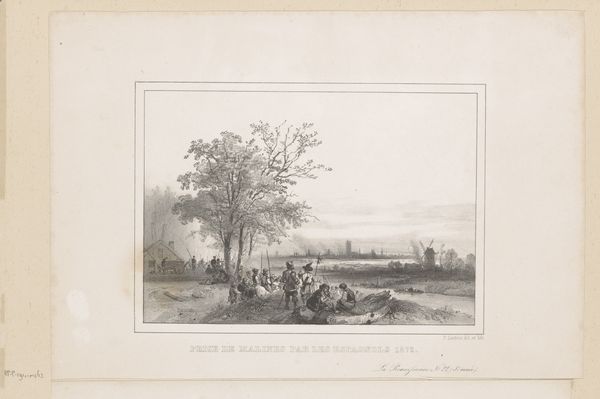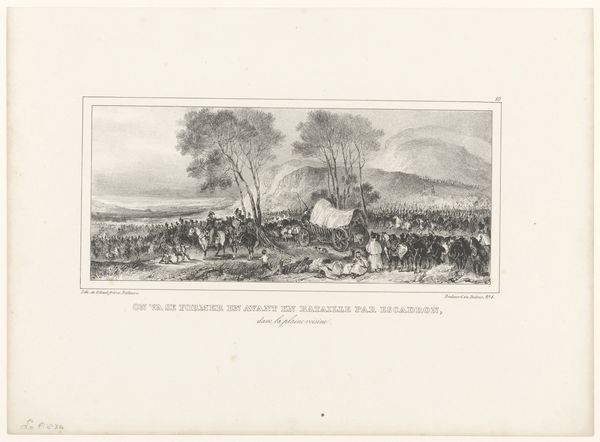
lithograph, print, engraving
#
narrative-art
#
lithograph
# print
#
romanticism
#
cityscape
#
history-painting
#
engraving
Dimensions: height 365 mm, width 550 mm
Copyright: Rijks Museum: Open Domain
Curator: At first glance, there's an almost dreamlike quality to this cityscape. The gray tones create an ethereal, hazy atmosphere over the water, with so many figures crammed into these small boats! Editor: That haze almost certainly veils a loaded narrative. We're looking at Auguste Raffet's lithograph, "The French Conquer the Vlaams Hoofd, December 26, 1832," created in 1833. Curator: Conquest, indeed. The piece illustrates French troops crossing a waterway – presumably as part of a larger military campaign. It clearly speaks to the political turmoil and nationalistic fervor of 19th-century Europe. But why immortalize this moment through art? Editor: Lithographs like these played a crucial role in shaping public perception. Consider this artwork in context. France had just undergone a revolution. Romanticism in art served as a powerful vehicle for stirring emotions and reinforcing ideologies, in this case the heroism of military action and projecting a certain image of power to citizens both domestic and foreign. Curator: I see that. Note how the figures in the boats are depicted en masse, conveying a sense of overwhelming numbers, a force that's almost unstoppable. It reinforces the idea of a collective will and destiny. And those long lines of boats contribute to a feeling of inexorable progress. The rhythmic repetition serves a purpose. Editor: And what’s really insidious is that while seemingly celebrating military triumph, the print subtly normalizes violence and territorial expansion, perpetuating power imbalances, perhaps unintentionally. Also consider this work as a commodity, and factor that into the message and meaning to the viewer. Curator: It becomes an attractive heroic narrative instead of a visual condemnation of political motivations and outcomes of imperialism. I'm interested in the absence of prominent individual figures, too. The emphasis is on the collective, diminishing individual stories and potential dissent. Editor: Precisely! Even the title suggests a certain inevitability, casting the military campaign not just as conquest but as, ostensibly, ‘fait accompli’. Recognizing such layers reminds us of how art, particularly publicly distributed prints, often reflects—and reinforces—the prevailing power dynamics. Curator: Seeing the historical through line is especially useful when attempting to consider the socio-cultural climate surrounding and resulting from artistic decisions. I appreciate that you push past aesthetics alone to expose the more insidious layers within the piece. Editor: It helps me better understand, and contextualize what, as an activist, still reverberates today.
Comments
No comments
Be the first to comment and join the conversation on the ultimate creative platform.
